

EXPLORE BY TOPIC:
  Our top 10 resources
Our top 10 resources
  Childhood / Early Life
Childhood / Early Life
  Chronic Stress
Chronic Stress
  Education
Education
  Food Security
Food Security
  Genetics
Genetics
  Jobs & Work
Jobs & Work
  Housing / Neighborhoods
Housing / Neighborhoods
  Income & Wealth
Income & Wealth
  Race / Racism
Race / Racism
  Social Inclusion
Social Inclusion
  Policy & Change
Policy & Change





Buy the DVD
e-Newsletter
FAQs
Contact Us
Site Map
Home

|
 |


|
|
| |
|
Keyword=EP_1: 0 items found |
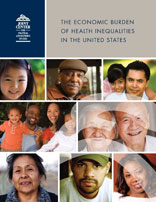 The Economic Burden of Health Inequalities in the United States The Economic Burden of Health Inequalities in the United States 
This study, commissioned by the Joint Center for Political and Economic Studies and carried out by leading researchers from Johns Hopkins University and the University of Maryland, provides important insight into how much of a financial burden racial disparities are putting on our health care system and society at large. The researchers examined the direct costs associated with the provision of care to a sicker and more disadvantaged population, as well as the indirect costs of health inequities such as lost productivity, lost wages, absenteeism, family leave, and premature death. |
 |
 The Fall and Rise of US Inequities in Premature Mortality: 1960-2002. The Fall and Rise of US Inequities in Premature Mortality: 1960-2002. 
SCHOLARLY ARTICLE by Nancy Krieger, et al., PLoS Medicine, 2008 Between 1966 and 1980, socioeconomic inequities in premature mortality and infant death shrank, absolutely and relatively, especially for US populations of color. However, starting in 1980, the relative gaps widened and the absolute gaps remained unchanged. |
 |
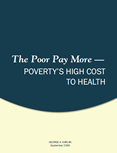 The Poor Pay More: Poverty's High Cost to Health The Poor Pay More: Poverty's High Cost to Health 
This report describes many of the ways in which being poor is bad for one’s health and points to policies that have the potential for restoring the prospect of good health to the lives of the poor. We present compelling evidence that poverty has an impact on not just the body politic but the body corporeal as well— that being poor leaves a broad footprint on the health of individuals. The health costs of poverty are high. Those among us who are poor tend to have
more illness and die younger. The report begins with descriptions of key determinants of health and the impact they have been shown to have on health. It then offers several policy options that might ease poverty and thereby improve health. |
 |
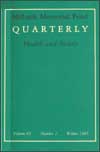 The Questionable Contribution of Medical Measures to the Decline of Mortality in the United States in the Twentieth Century The Questionable Contribution of Medical Measures to the Decline of Mortality in the United States in the Twentieth Century 
SCHOLARLY ARTICLE, The Milbank Memorial Fund Quarterly. Health and Society, 1977 This article makes the case that social reforms, not improvements in medical technology, have been largely responsible for the major improvements in population health over the past century. "Legislators, practitioners, and the public may deem it "heretical," but analysis of United States data shows that introduction of specific medical measures and expansion of services account for only a fraction of the decline in mortality since 1900. Even acknowledging that "mortality" and "health" are not synonymous, analysis of age- and sex-adjusted rates still suggests important trends and generates hypotheses for informed social action."
Available online by JSTOR subscription or purchase only. |
 |
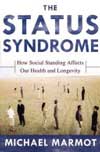 The Status Syndrome: How Social Standing Affects Our Health and Longevity The Status Syndrome: How Social Standing Affects Our Health and Longevity 
BOOK by Sir Michael Marmot, 2004 Marmot, advisor to the World Health Organization and one of the premiere scholars on social determinant of health, presents the results of his own 30 year study into the effects of class on health, together with a comprehensive overview of current theory and research. He highlights how a sense of autonomy and control over our lives can be a key factor in our ability to live long, thriving lives. |
 |
U.S. Health in International Perspectives: Shorter Lives, Poorer Health 
Institute of Medicine The United States is among the wealthiest nations in the world, but it is far from the healthiest. Although Americans’ life expectancy and health have improved over the past century, these gains have lagged behind those in other high-income countries. This health disadvantage prevails even though the United States spends far more per person on health care than any other nation. To gain a better understanding of this problem, the National Institutes of Health (NIH) asked the National Research Council and the Institute of Medicine to convene a panel of experts to investigate potential reasons for the U.S. health disadvantage and to assess its larger implications. The panel’s findings are detailed in its report, "U.S. Health in International Perspective: Shorter Lives, Poorer Health." |
 |
 Unequal America: Causes and Consequences of the Wide- and Growing- Gap Between Rich and Poor Unequal America: Causes and Consequences of the Wide- and Growing- Gap Between Rich and Poor 
Disparities in health tend to fall along income lines everywhere: the poor generally get sicker and die sooner than the rich. But in the United States, the gap between the rich and the poor is far wider than in most other developed democracies, and it is getting wider. That is true both before and after taxes: the United States also does less than most other rich democracies to redistribute income from the rich to the poor.
Americans, on average, have a higher tolerance for income inequality than their European counterparts. American attitudes focus on equality of opportunity, while Europeans tend to see fairness in equal outcomes. Among Americans, differences of opinion about inequality can easily degenerate into partisan disputes over whether poor people deserve help and sympathy or should instead pull themselves up by their bootstraps. The study of inequality attempts to test inequality’s effects on society, and it is delivering findings that command both sides’ attention. |
 |
 Unequal Lives: Health and Socioeconomic Inequalities Unequal Lives: Health and Socioeconomic Inequalities 
BOOK by Hilary Graham This book introduces the non-specialist to key concepts like health inequalities and health inequities, social class and socioeconomic position, social determinants and life course, as well as to the key indicators of health and socioeconomic position. It brings together research from social epidemiology, sociology and social policy to guide the reader to an understanding of why people's lives and people's health remain so unequal, even in rich societies where there is more than enough for all. |
 |
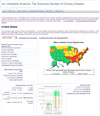 Unhealthy America: The Economic Burden of Chronic Disease Unhealthy America: The Economic Burden of Chronic Disease 
WEBSITE by The Milken Institute This interactive website provides a wealth of information on the rates and costs of chronic disease broken down by geography and disease. In its groundbreaking study, “An Unhealthy America: The Economic Impact of Chronic Disease,” the Milken Institute details the enormous financial impact of chronic disease on the U.S. economy – not only in treatment costs, but lost worker productivity – today and in the decades ahead. It also describes the huge savings if a serious effort were made to improve Americans’ health. |
 |
 Waking Up from the American Dream: Meritocracy and Equal Opportunity Are Fading Fast Waking Up from the American Dream: Meritocracy and Equal Opportunity Are Fading Fast 
EDITORIAL by Aaron Bernstein, Business Week Magazine, 2003 Dead-end jobs and the high cost of college could be choking off upward mobility... |
 |
 What If We Were Equal? A Comparison Of The Black-White Mortality Gap In 1960 And 2000 What If We Were Equal? A Comparison Of The Black-White Mortality Gap In 1960 And 2000 
SCHOLARLY ARTICLE by David Satcher, et al., Health Affairs, 2005 The United States has made progress in decreasing the black-white gap in civil rights, housing, education, and income since 1960, but health inequalities persist. We examined trends in black-white standardized mortality ratios (SMRs) for each age-sex group from 1960 to 2000. The black-white gap measured by SMR changed very little between 1960 and 2000 and actually worsened for infants and for African American men age thirty-five and older. In contrast, SMR improved in African American women. Using 2002 data, an estimated 83,570 excess deaths each year could be prevented in the United States if this black-white mortality gap could be eliminated. |
 |
 What Is Race? What Is Race? 
We all know that people look different. Anyone can tell a Czech from a Chinese. But are these differences racial? What does race mean? Find the answers to these and other questions by exploring different interactivities within this site.
There's less - and more - to race than meets the eye.
|
 |
 What the Federal Government Can Do About the Nonmedical Determinants of Health What the Federal Government Can Do About the Nonmedical Determinants of Health 
SCHOLARLY ARTICLE, Nicole Lurie MD, Health Affairs, 2002 Growing recognition that the acute health care delivery system contributes proportionally less to health when compared with environment and behavior has focused scholars and public health experts on the need to address nonmedical determinants of health. This paper outlines some steps that the U.S. government can take to address these factors and describes some of the challenges involved. Actions that can be undertaken now are increased education and leadership,development of mechanisms to further collaboration among sectors,expanded monitoring and reporting on nonmedical determinants, and developing new knowledge about how these factors affect health and successful interventions to address them. |
 |
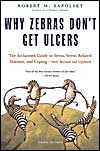 Why Zebras Don't Get Ulcers Why Zebras Don't Get Ulcers 
BOOK by Robert Sapolsky, 1994 This link is to a brief overview at brainconnection.com of a Sapolsky lecture based on his book of the same name. The book's title stems from Sapolsky's thesis that animals in the wild are less likely suffer from the chronic stress that contributes to a variety of human maladies. Sapolsky focuses on the effects of stress hormones on the human body. Praised as "One of the best science writers of our time," by Oliver Sacks, Sapolsky offers witty footnotes and several anecdotes which make the reading that much more interesting. While most of the book focuses on the biological machinery of the body, the last chapter of the book addresses self help. |
 |
 YOYO Health YOYO Health 
ONLINE INTERACTIVITY based on UNNATURAL CAUSES The U.S. is one of the richest, most powerful countries in the world. Half of all the health care dollars in the world are spent each year in the U.S. So are we healthier as a result? If not, what do healthy countries have in common that we don't?
Select a chart to see how the U.S. compares with other countries on a few international measures. Then read the conclusion to learn what it all means. |
 |
| « Prev 1 | 2 | 3 |
|




